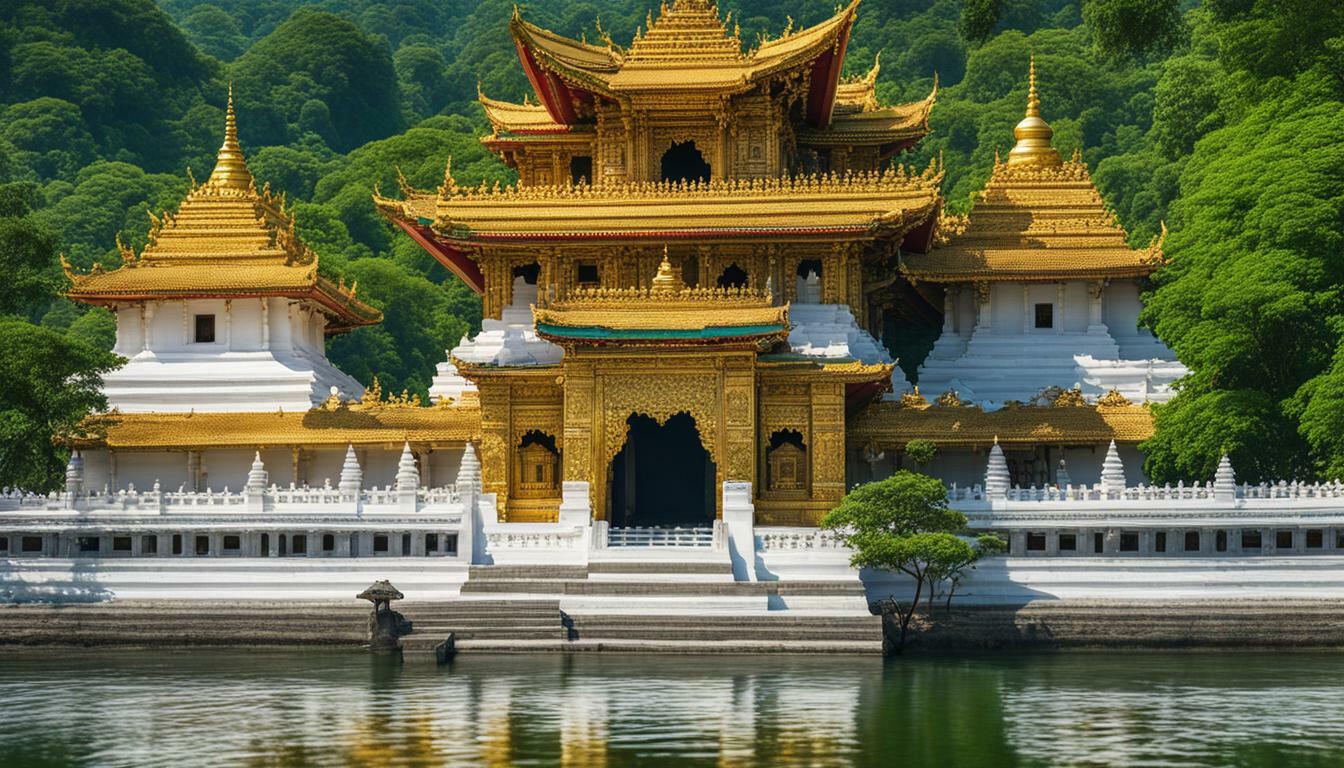The Chiang Mai White Temple, also known as Wat Rong Khun, is a stunningly beautiful temple in Chiang Mai, Thailand that attracts visitors from all over the world. Its pristine white exterior and intricate architecture make it a must-visit attraction for anyone traveling to Chiang Mai.
Designed by artist and architect Chalermchai Kositpipat, the temple is a unique blend of traditional Buddhist motifs and modern design elements. The stark white exterior, which symbolizes purity and the Buddha’s wisdom, is adorned with intricate murals and sculptures that tell stories from Buddhism, Thai history, and pop culture.
A visit to the Chiang Mai White Temple is not only an opportunity to admire its beauty but also to learn about Thai culture, history, and spirituality.
- The Chiang Mai White Temple, or Wat Rong Khun, is a popular tourist attraction in Chiang Mai, Thailand.
- The temple’s unique design is a blend of traditional Buddhist motifs and modern elements.
- The temple’s exterior is stark white and is adorned with intricate murals and sculptures depicting stories from Buddhism, Thai history, and pop culture.
- A visit to the Chiang Mai White Temple is an opportunity to learn about Thai culture, history, and spirituality.
- Don’t forget your camera, as the temple’s beauty makes for excellent photo opportunities!
Uncover the Rich History of Chiang Mai White Temple
The Chiang Mai White Temple, also known as Wat Rong Khun, has a fascinating history that dates back to the end of the 20th century. It was designed by renowned Thai artist Chalermchai Kositpipat, who wanted to create a unique temple that would stand out from others in the country.
Construction of the temple began in 1997, and it was opened to the public in 2008. While the exterior of the temple is pure white, the interior is filled with colorful murals that depict stories from Buddhist mythology and contemporary culture.
The temple’s design is full of symbolic references. The white exterior represents the purity of Buddha, while the glass fragments used in the plaster represent wisdom. The bridges leading to the temple represent the crossing from the cycle of rebirth to enlightenment.
The Chiang Mai White Temple is now one of the most famous temples in Chiang Mai, attracting visitors from around the world who are drawn to its unique beauty and history.
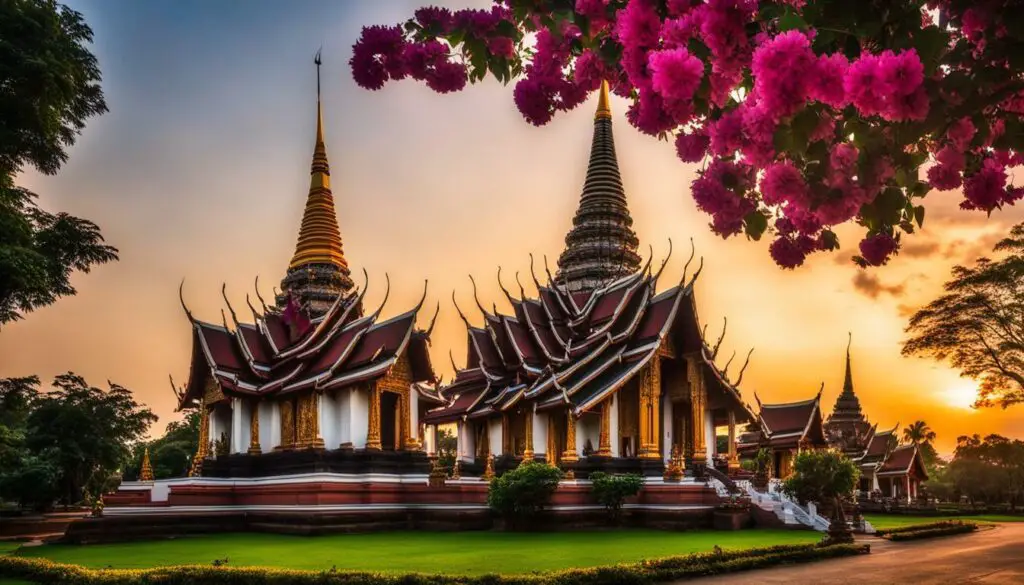
It is one of the must-visit destinations for anyone interested in exploring the cultural offerings of Thailand.
Marvel at the Magnificent Architecture of Chiang Mai White Temple
The Chiang Mai White Temple, also known as Wat Rong Khun, is a true architectural masterpiece that has been captivating visitors for years. The temple’s unique design has made it one of the most famous temples in Chiang Mai and a must-see attraction in Thailand.
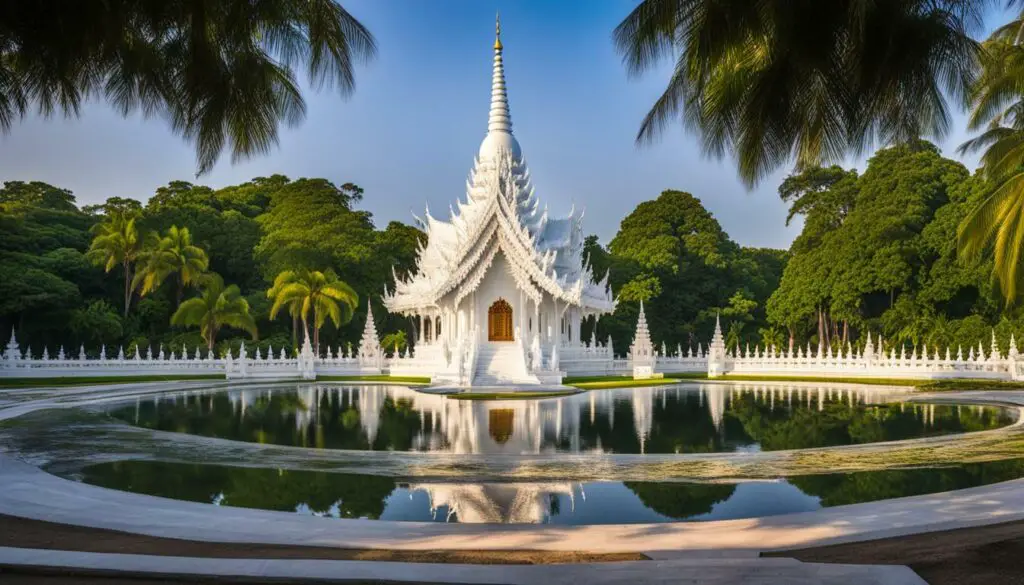
The temple’s exterior is predominantly white, symbolizing purity and the Buddha’s clarity. This striking color contrasts with the intricate black detailing that covers the surfaces, representing the uncertainty and darkness of human existence.
The temple’s entrance is guarded by two giants, who represent the dualities of good and evil. Visitors cross a bridge over a small pond that is home to hundreds of white sculptures of hands. These represent the cycle of rebirth and the need to let go of material possessions.
As visitors enter the main temple, they are greeted by a stunning mural of Buddha that stretches across the ceiling. The mural is composed of thousands of small, reflective tiles, adding depth and movement to the artwork. The temple’s interior also features intricate carvings and sculptures that depict Buddhist teachings and stories.
The Chiang Mai White Temple is a true example of contemporary Thai art and architecture. The designer, Chalermchai Kositpipat, has combined traditional and modern elements to create a temple that is both meaningful and visually stunning.
Visitors to Chiang Mai should not miss the opportunity to marvel at the magnificent architecture of the Chiang Mai White Temple, a temple that truly embodies the beauty and spirituality of Thailand.
Plan Your Visit to Chiang Mai White Temple
Visiting the Chiang Mai White Temple, or Wat Rong Khun, is a must-do activity for anyone traveling to Chiang Mai. It is one of the most famous temples in Chiang Mai and a top attraction for Chiang Mai tourism.
The temple is open from 8 AM to 6 PM, and admission costs 100 baht for adults and 50 baht for children. Visitors are required to dress modestly, meaning no shorts, short skirts, or sleeveless shirts.
The best time to visit the temple is in the morning when the temperature is cooler, and the crowds are smaller. It is recommended to arrive early to avoid long lines.
Inside the temple, visitors can explore the ornate interior and marvel at the stunning artwork and intricate details. Photography is allowed inside the temple, but be respectful of the religious nature of the temple and avoid using flash.
| Opening Hours | Admission Fees | Dress Code |
|---|---|---|
| 8 AM – 6 PM | 100 baht (adults) 50 baht (children) |
No shorts, short skirts, or sleeveless shirts |
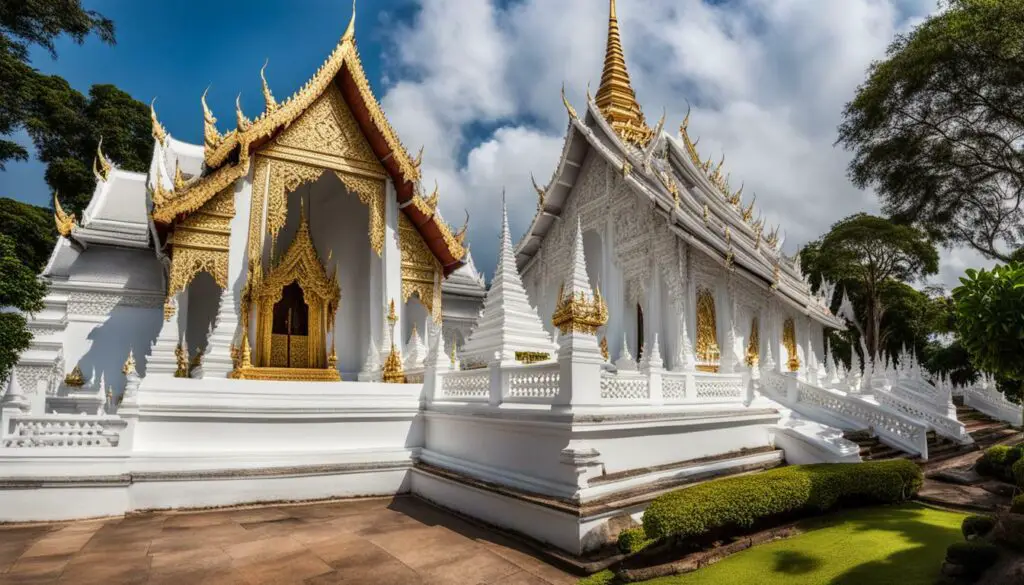
It is worth noting that the temple is a popular destination, and it can get crowded, especially during peak tourist season. Consider planning your visit during the low season or on weekdays for a more peaceful experience.
Overall, a visit to the Chiang Mai White Temple is an unforgettable experience and a must-do activity in Chiang Mai. With proper planning and preparation, visitors can make the most of their visit and fully appreciate the beauty of this remarkable temple.
Explore Other Must-See Attractions in Chiang Mai
Chiang Mai is a city that offers an incredible array of things to see and do. Once you have visited the stunning Chiang Mai White Temple, make sure to check out these other must-see attractions:
- Doi Suthep-Pui National Park: This breathtakingly beautiful park is home to some of the most stunning natural scenery in Thailand. Visitors can hike to the top of Doi Suthep mountain, swim in the park’s waterfalls and explore the lush forests.
- Elephant Nature Park: For a unique and unforgettable experience, visit this sanctuary for rescued elephants. Visitors can feed, bathe, and even walk with the elephants, while learning about their history and behavior.
- Night Bazaar: This bustling open-air market is a shopper’s paradise. From clothing and jewelry to souvenirs and street food, visitors can find just about anything here.
- Wat Phra That Doi Suthep: This mountaintop temple is a must-see for its stunning architecture and breathtaking views of Chiang Mai. Visitors must climb a steep staircase to reach the temple, but the effort is well worth it.
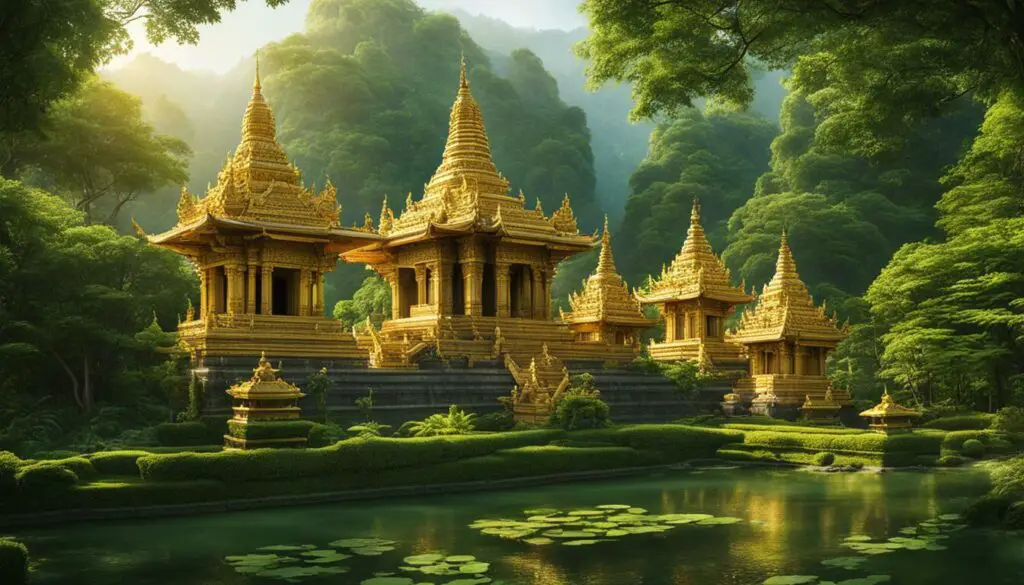
These are just a few of the many attractions Chiang Mai has to offer. From its rich cultural heritage to its stunning natural beauty, this city is a must-visit destination for anyone seeking a truly unforgettable experience.
Immerse Yourself in the Spiritual Atmosphere of Chiang Mai Temple.
The Chiang Mai White Temple is not just a stunning physical structure but also an important spiritual center. As one of the most famous temples in Chiang Mai and Thailand, it plays a significant role in the religious practices and rituals of locals and visitors alike.
Many of the temples in Chiang Mai, including this one, are considered “wats” – Buddhist temples that are not just places of worship but also centers of learning and community activities. Visitors to the Chiang Mai White Temple can witness monks going about their daily routines, practicing meditation, and performing religious ceremonies.
It’s important to note that when visiting a temple in Thailand, visitors should dress respectfully, covering their shoulders and legs. Visitors should also remove their shoes before entering the temple, and avoid pointing their feet towards any Buddha images or monks.
For those interested in learning more about Buddhism, many temples in Chiang Mai offer programs and retreats for foreigners, providing an opportunity to deepen their understanding of the religion and connect with the local community.
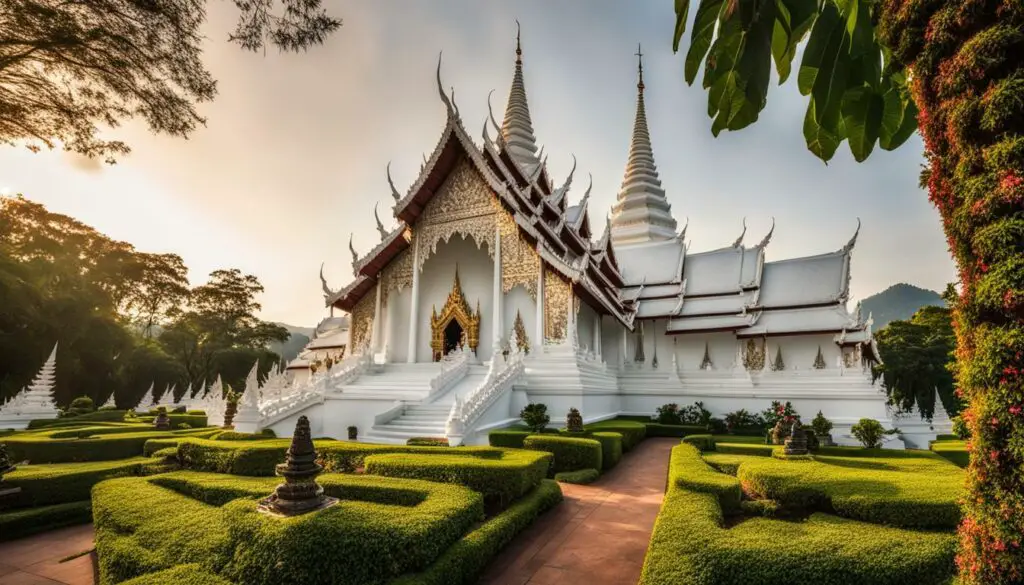
The spiritual atmosphere of the Chiang Mai White Temple is palpable, making it a must-see destination for those seeking a deeper connection with the local culture and religion.
Discover the Symbolism Behind the White Temple in Thailand
The Chiang Mai White Temple, also known as Wat Rong Khun, is not just a beautiful sight to behold. It is also steeped in symbolism and meaning that adds depth to its already impressive design. The temple’s creator, Chalermchai Kositpipat, designed it to reflect Buddhist teachings and values, with each aspect of the temple having its own significance.
The use of the color white is one of the most notable symbolic elements of the temple. It represents the purity of the Buddha, as well as the desire to attain enlightenment and escape from the cycle of rebirth. The white color also emphasizes the temple’s cleanliness, creating a sense of peace and tranquility for visitors.
Another significant feature of the Chiang Mai White Temple is the use of mirrors in its design. These mirrors reflect the sun’s light, symbolizing the Buddha’s teachings as a guiding light that illuminates the path to enlightenment. The mirrors also represent the importance of self-reflection, encouraging visitors to look inward and reflect on their own spiritual journey.
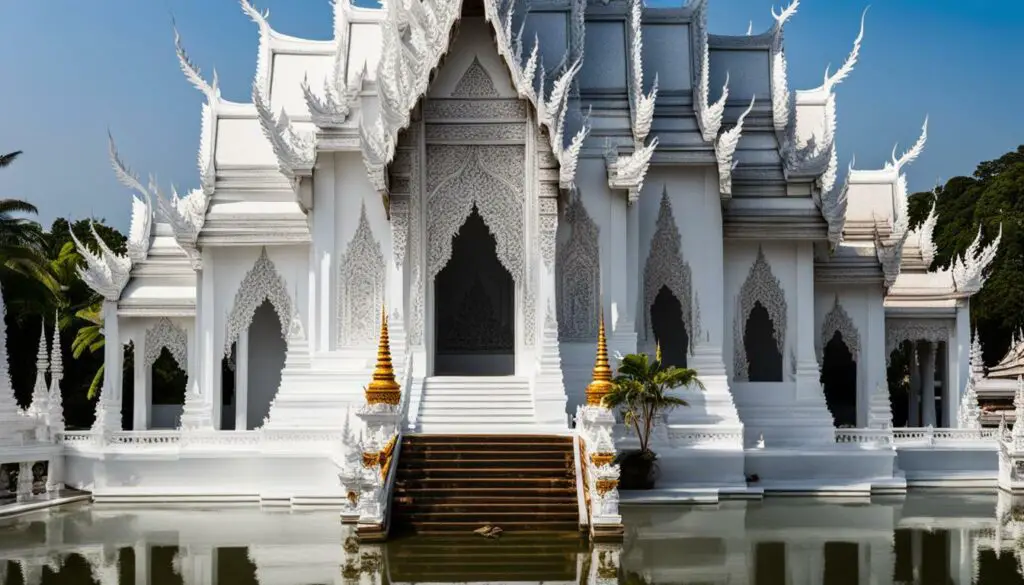
The intricate carvings and sculptures found throughout the temple also hold deep meaning. For example, the large hands that appear on the bridge leading to the temple represent the human desires that must be overcome to attain enlightenment. The outstretched hands symbolize the act of giving and letting go, two important concepts in Buddhism.
Another notable feature of the Chiang Mai White Temple is the inclusion of contemporary images and references in its artwork. These modern images, such as paintings of Superman and the 9/11 attacks, represent the challenges and issues facing society today. By incorporating these images into traditional Buddhist art, the temple encourages visitors to consider how they can apply Buddhist teachings to their modern lives.
Overall, the Chiang Mai White Temple’s symbolism and meaning add even more depth to its already breathtaking beauty. Visitors who take the time to explore and understand its significance will gain a richer appreciation for this remarkable temple in Thailand.
Experience the White Temple’s Ornate Interior
Once inside the Chiang Mai White Temple, visitors are transported to a world of intricate art and spiritual symbolism. Every inch of the temple’s interior is adorned with breathtaking murals and sculptures that tell the story of Buddhism and Thai culture.
The murals are particularly impressive, featuring a mix of traditional Buddhist motifs and modern-day references. Visitors can spot depictions of superheroes, movie characters, and even famous politicians woven into the intricate designs. The artist, Chalermchai Kositpipat, uses this blend of traditional and contemporary elements to make the murals more relatable and accessible to modern audiences.
One of the most stunning features of the temple’s interior is the ornate stupa or chedi. The inside of the chedi is home to a beautiful golden Buddha statue, providing a peaceful focal point for visitors to meditate and reflect.
Another masterpiece of the White Temple’s interior is the Bridge of the Cycle of Rebirth. This bridge symbolizes the journey of life and death and is flanked by intricate sculptures depicting hands reaching up from the depths of hell.
Overall, the Chiang Mai White Temple’s interior is a masterful display of art and spirituality. Visitors will marvel at the attention to detail and the skill of the artists who created it.
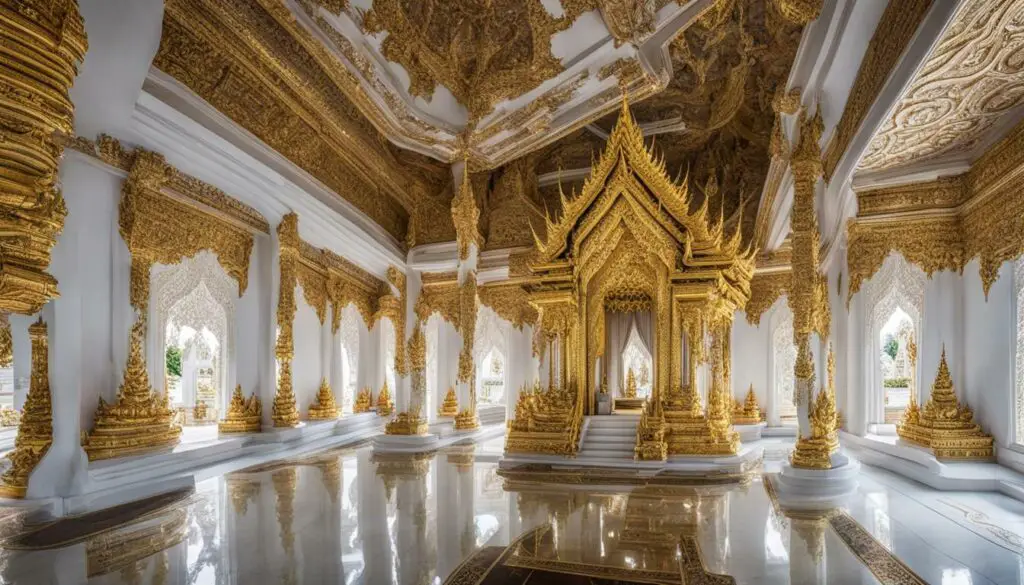
The Chiang Mai White Temple, also known as Wat Rong Khun, is not only a remarkable temple but also a hotspot for photography enthusiasts. Visitors can capture stunning photos and create unforgettable memories at this picturesque location.
The temple’s unique architecture with its intricate details and ornate adornments provides a perfect backdrop for photographers and their subjects. The gleaming white structure against the blue sky presents a stunning contrast, and the serene surroundings add to the peaceful ambiance.
One of the most photographed areas of the temple is the bridge leading to the entrance. The bridge, known as the “Cycle of Rebirth,” is adorned with sculptures of outreaching hands that symbolize unrestrained desire. This bridge offers a fantastic photo opportunity and captures the essence of the temple’s spiritual significance.
Another area that visitors should not miss for photos is the interior of the temple. The murals inside the temple feature a mix of traditional Thai Buddhist and contemporary pop culture imagery and are nothing short of breathtaking. The intricate details of the artwork make for wonderful photos that reflect the temple’s beauty in every shot.
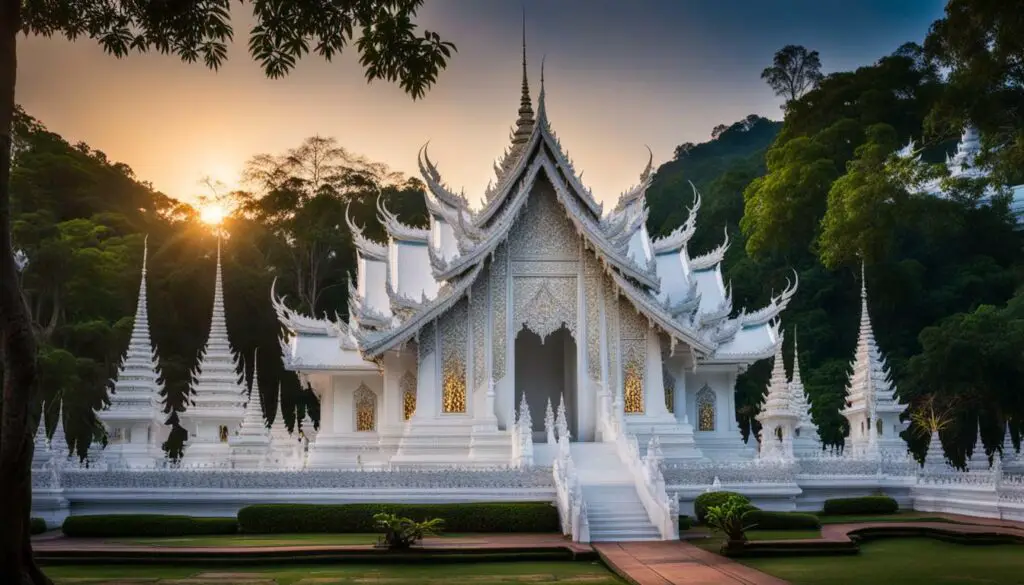
Furthermore, the temple’s surroundings are just as picturesque as the temple itself. The lush greenery, the serene pond, and the tranquil gardens provide several opportunities for nature photography enthusiasts. Visitors can also capture the temple’s reflection on the water, creating a picture-perfect moment.
Overall, the Chiang Mai White Temple offers a feast for the senses and a perfect location for creating unforgettable memories. Visitors should make sure to bring their cameras and capture the beauty of this remarkable attraction.
Experience Chiang Mai White Temple’s Vibrant Festivals
The Chiang Mai White Temple is not only a remarkable sight to behold, but it’s also a hub of cultural celebrations and festivals throughout the year. Visitors can immerse themselves in the vibrant atmosphere and experience the unique traditions of Thai culture.
Visakha Bucha Day
One of the most significant celebrations at the Chiang Mai White Temple is Visakha Bucha Day, which commemorates the birth, life, enlightenment, and passing of the Buddha. The temple hosts a candlelit procession, in which visitors can participate, and observe various rituals. It’s a spiritual and cultural experience that visitors should not miss.
Loi Krathong Festival
The Loi Krathong Festival is a beloved celebration in Thailand, where people release floating lanterns onto the water as a symbol of letting go of negative thoughts and feelings. At the Chiang Mai White Temple, visitors can take part in this ritual and enjoy a beautiful display of lights and colors.
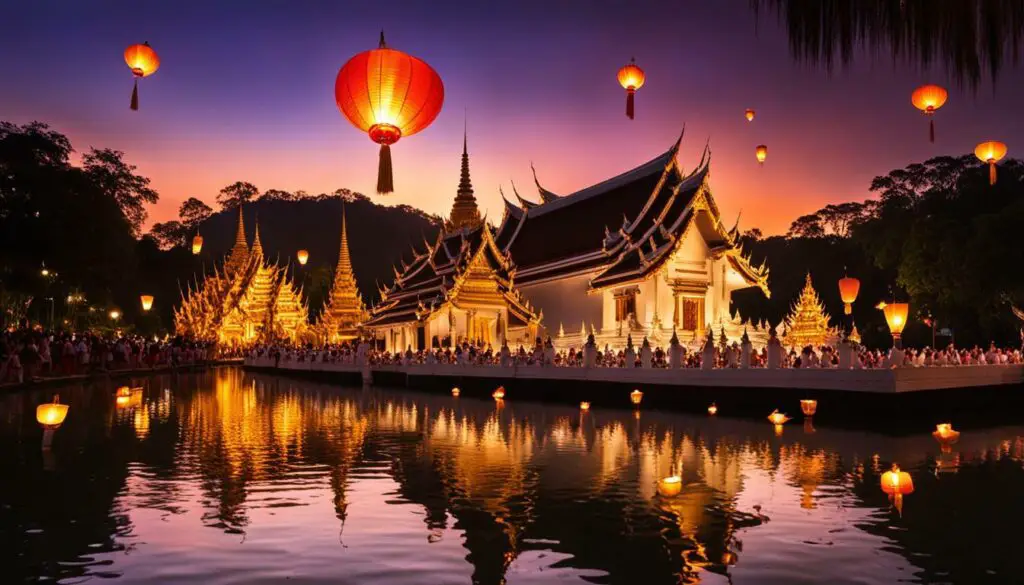
The Songkran Festival is Thailand’s New Year celebration, during which people splash water on each other to symbolize renewal and purification. At the Chiang Mai White Temple, visitors can join in the fun and throw water in a joyful and playful atmosphere.
These vibrant festivals are just some of the events that take place at the Chiang Mai White Temple throughout the year. Visitors should check the temple’s calendar of events to plan their visit and experience the richness of Thai culture.
Support the Preservation of Chiang Mai White Temple
The Chiang Mai White Temple, also known as Wat Rong Khun, is a cultural and historical gem that should be preserved for future generations. The temple has been subject to wear and tear over the years, and there are concerns about its long-term sustainability.
Fortunately, there are ways that visitors can support the preservation of this iconic landmark. One of the easiest ways to contribute is by donating to the temple’s restoration fund. Every donation, no matter how small, can make a difference in preserving this magnificent structure.
Another way to support the preservation of the Chiang Mai White Temple is to be mindful when visiting. This includes not touching or damaging any of the temple’s delicate features and respecting the temple’s cultural and religious significance. It is also essential to follow the temple’s rules, such as not wearing revealing clothing and removing shoes before entering.
Before leaving the temple, visitors can also purchase souvenirs from the onsite gift shop. The profits from these sales go towards the temple’s preservation efforts.
By taking these simple actions, visitors can help ensure that the Chiang Mai White Temple remains a vital part of Thailand’s cultural heritage for generations to come.
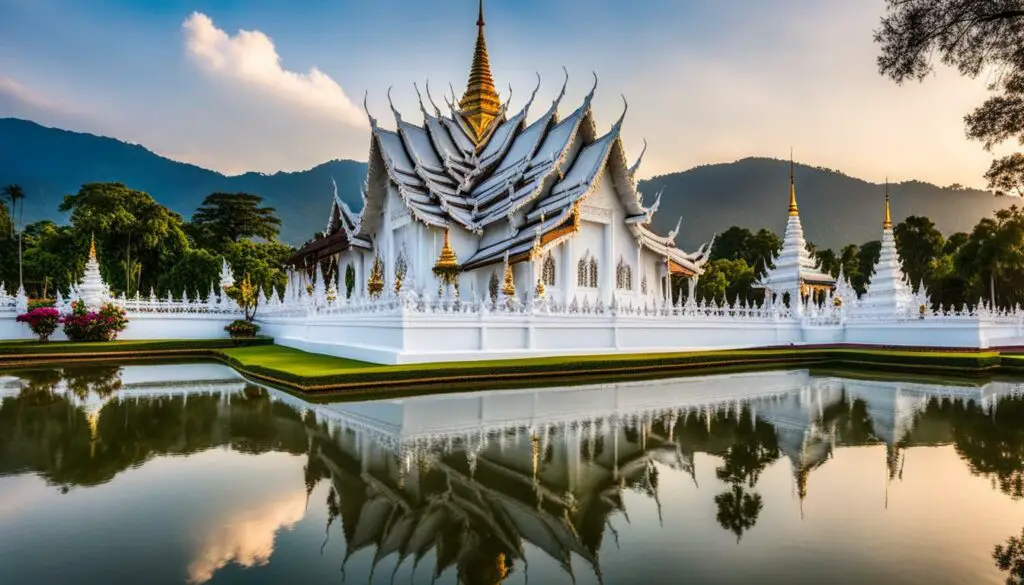
Conclusion
The Chiang Mai White Temple, also known as Wat Rong Khun, is a remarkable attraction that must be explored by anyone visiting Chiang Mai. Its breathtaking beauty, rich history, and vibrant festivals make it one of the top must-see attractions in Thailand. Visitors can immerse themselves in the spiritual atmosphere, marvel at the magnificent architecture, and discover the deeper symbolism behind the white temple in Thailand.
When planning a visit, be sure to check the opening hours and ticket prices. It is recommended to visit early in the morning and avoid the peak tourist season to fully experience the temple’s grandeur. Visitors should also take the opportunity to explore other top attractions in Chiang Mai, including natural landmarks and cultural sites.
It is important to remember to support the preservation and maintenance of the Chiang Mai White Temple. Every effort should be made to ensure its longevity for future generations to appreciate. So, if you are planning a visit to Chiang Mai, don’t miss the chance to experience the beauty and significance of this remarkable temple in Thailand.
FAQ
Q: What is the Chiang Mai White Temple?
A: The Chiang Mai White Temple, also known as Wat Rong Khun, is a stunning temple located in Chiang Mai, Thailand.
Q: What is the history of Chiang Mai White Temple?
A: The Chiang Mai White Temple has a rich history, with construction beginning in 1997. It was designed by renowned artist Chalermchai Kositpipat as an offering to Lord Buddha.
Q: What makes the architecture of Chiang Mai White Temple unique?
A: The architecture of the Chiang Mai White Temple is characterized by its intricate and detailed design. It features white plaster exteriors adorned with mirrored glass pieces, creating a sparkling effect.
Q: How can I plan my visit to the Chiang Mai White Temple?
A: To plan your visit to the Chiang Mai White Temple, it is recommended to check the opening hours, purchase tickets in advance, and consider the best time to visit to avoid crowds.
Q: What other attractions should I explore in Chiang Mai?
A: Chiang Mai offers numerous must-see attractions, including the Doi Suthep Temple, the Old City, and the Night Bazaar. These attractions provide a diverse and enriching experience.
Q: What is the significance of Chiang Mai’s temples?
A: Chiang Mai’s temples hold great spiritual and cultural significance. They serve as places of worship, meditation, and connection to Thai traditions and beliefs.
Q: What symbolism is behind the White Temple in Thailand?
A: The White Temple in Thailand symbolizes purity and the path to enlightenment. It incorporates elements of Buddhism, Hinduism, and modern cultural references.
Q: What can I expect from the White Temple’s ornate interior?
A: Inside the White Temple, visitors can expect to be amazed by the intricate murals and sculptures that portray various mythological and spiritual figures, creating a visually captivating environment.
Q: Is the Chiang Mai White Temple a good spot for photography?
A: Yes, the Chiang Mai White Temple offers plenty of photo opportunities. It is recommended to explore different angles and viewpoints to capture unforgettable memories of the temple’s beauty.
Q: Are there any festivals held at the Chiang Mai White Temple?
A: Yes, the Chiang Mai White Temple hosts vibrant festivals throughout the year, including the Songkran Festival and the Loy Krathong Festival. These festivals showcase unique cultural traditions.
Q: How can I support the preservation of the Chiang Mai White Temple?
A: You can support the preservation of the Chiang Mai White Temple by visiting responsibly, following the rules and guidelines, and making a donation towards the temple’s maintenance and restoration efforts.
